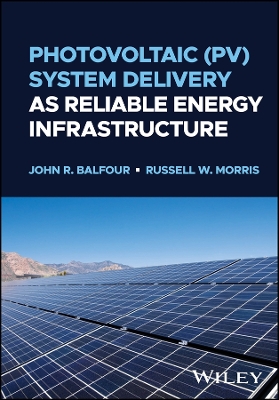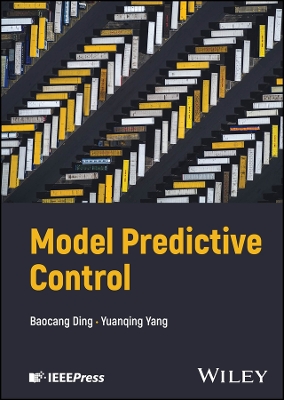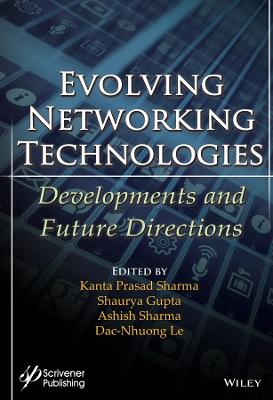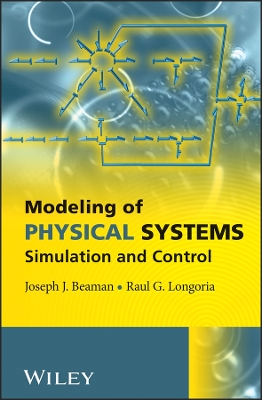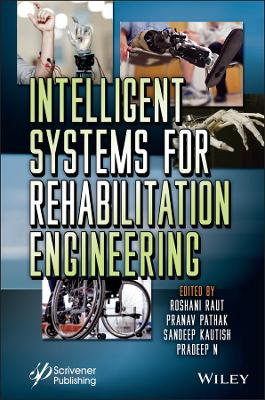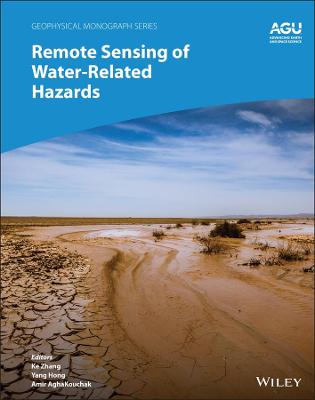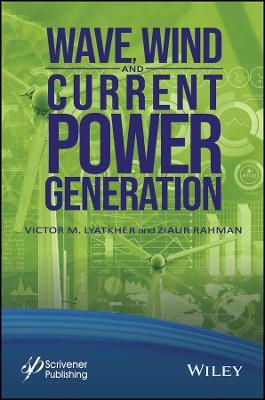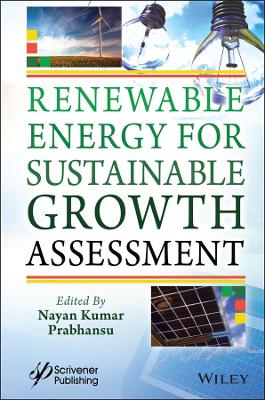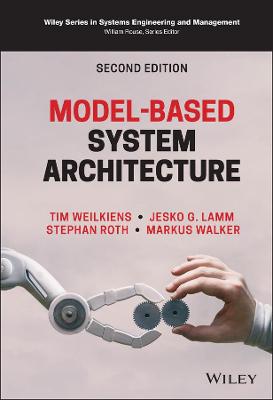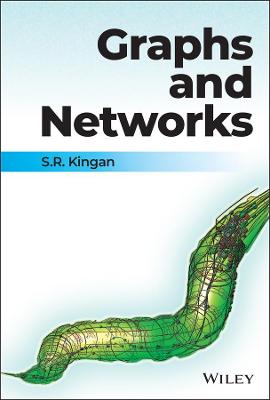Process Control System Fault Diagnosis
 -15%
portes grátis
-15%
portes grátis
Process Control System Fault Diagnosis
A Bayesian Approach
Qi, Fei; Huang, Biao; Gonzalez, Ruben
John Wiley & Sons Inc
09/2016
360
Dura
Inglês
9781118770610
15 a 20 dias
714
Acknowledgements xvii
List of Figures xix
List of Tables xxiii
Nomenclature xxv
Part I FUNDAMENTALS
1 Introduction 3
1.1 Motivational Illustrations 3
1.2 Previous Work 4
1.2.1 Diagnosis Techniques 4
1.2.2 Monitoring Techniques 7
1.3 Book Outline 12
1.3.1 Problem Overview and Illustrative Example 12
1.3.2 Overview of Proposed Work 12
References 16
2 Prerequisite Fundamentals 19
2.1 Introduction 19
2.2 Bayesian Inference and Parameter Estimation 19
2.2.1 Tutorial on Bayesian Inference 24
2.2.2 Tutorial on Bayesian Inference with Time Dependency 27
2.2.3 Bayesian Inference vs. Direct Inference 32
2.2.4 Tutorial on Bayesian Parameter Estimation 33
2.3 The EM Algorithm 38
2.4 Techniques for Ambiguous Modes 44
2.4.1 Tutorial on ? Parameters in the Presence of Ambiguous Modes 46
2.4.2 Tutorial on Probabilities Using ? Parameters 47
2.4.3 Dempster-Shafer Theory 48
2.5 Kernel Density Estimation 51
2.5.1 From Histograms to Kernel Density Estimates 52
2.5.2 Bandwidth Selection 54
2.5.3 Kernel Density Estimation Tutorial 55
2.6 Bootstrapping 56
2.6.1 Bootstrapping Tutorial 57
2.6.2 Smoothed Bootstrapping Tutorial 57
2.7 Notes and References 60
References 61
3 Bayesian Diagnosis 62
3.1 Introduction 62
3.2 Bayesian Approach for Control Loop Diagnosis 62
3.2.1 Mode M 62
3.2.2 Evidence E 63
3.2.3 Historical Dataset D 64
3.3 Likelihood Estimation 65
3.4 Notes and References 67
References 67
4 Accounting for Autodependent Modes and Evidence 68
4.1 Introduction 68
4.2 Temporally Dependent Evidence 68
4.2.1 Evidence Dependence 68
4.2.2 Estimation of Evidence-transition Probability 70
4.2.3 Issues in Estimating Dependence in Evidence 74
4.3 Temporally Dependent Modes 75
4.3.1 Mode Dependence 75
4.3.2 Estimating Mode Transition Probabilities 77
4.4 Dependent Modes and Evidence 81
4.5 Notes and References 82
References 82
5 Accounting for Incomplete Discrete Evidence 83
5.1 Introduction 83
5.2 The Incomplete Evidence Problem 83
5.3 Diagnosis with Incomplete Evidence 85
5.3.1 Single Missing Pattern Problem 86
5.3.2 Multiple Missing Pattern Problem 92
5.3.3 Limitations of the Single and Multiple Missing Pattern Solutions 93
5.4 Notes and References 94
References 94
6 Accounting for Ambiguous Modes: A Bayesian Approach 96
6.1 Introduction 96
6.2 Parametrization of Likelihood Given Ambiguous Modes 96
6.2.1 Interpretation of Proportion Parameters 96
6.2.2 Parametrizing Likelihoods 97
6.2.3 Informed Estimates of Likelihoods 98
6.3 Fagin-Halpern Combination 99
6.4 Second-order Approximation 100
6.4.1 Consistency of ? Parameters 101
6.4.2 Obtaining a Second-order Approximation 101
6.4.3 The Second-order Bayesian Combination Rule 103
6.5 Brief Comparison of Combination Methods 104
6.6 Applying the Second-order Rule Dynamically 105
6.6.1 Unambiguous Dynamic Solution 105
6.6.2 The Second-order Dynamic Solution 106
6.7 Making a Diagnosis 107
6.7.1 Simple Diagnosis 107
6.7.2 Ranged Diagnosis 107
6.7.3 Expected Value Diagnosis 107
6.8 Notes and References 111
References 111
7 Accounting for Ambiguous Modes: A Dempster-Shafer Approach 112
7.1 Introduction 112
7.2 Dempster-Shafer Theory 112
7.2.1 Basic Belief Assignments 112
7.2.2 Probability Boundaries 114
7.2.3 Dempster's Rule of Combination 114
7.2.4 Short-cut Combination for Unambiguous Priors 115
7.3 Generalizing Dempster-Shafer Theory 116
7.3.1 Motivation: Difficulties with BBAs 117
7.3.2 Generalizing the BBA 119
7.3.3 Generalizing Dempster's Rule 122
7.3.4 Short-cut Combination for Unambiguous Priors 123
7.4 Notes and References 124
References 125
8 Making Use of Continuous Evidence Through Kernel Density Estimation 126
8.1 Introduction 126
8.2 Performance: Continuous vs. Discrete Methods 127
8.2.1 Average False Negative Diagnosis Criterion 127
8.2.2 Performance of Discrete and Continuous Methods 129
8.3 Kernel Density Estimation 132
8.3.1 From Histograms to Kernel Density Estimates 132
8.3.2 Defining a Kernel Density Estimate 134
8.3.3 Bandwidth Selection Criterion 135
8.3.4 Bandwidth Selection Techniques 136
8.4 Dimension Reduction 137
8.4.1 Independence Assumptions 138
8.4.2 Principal and Independent Component Analysis 139
8.5 Missing Values 139
8.5.1 Kernel Density Regression 140
8.5.2 Applying Kernel Density Regression for a Solution 141
8.6 Dynamic Evidence 142
8.7 Notes and References 143
References 143
9 Accounting for Sparse Data Within a Mode 144
9.1 Introduction 144
9.2 Analytical Estimation of the Monitor Output Distribution Function 145
9.2.1 Control Performance Monitor 145
9.2.2 Process Model Monitor 146
9.2.3 Sensor Bias Monitor 148
9.3 Bootstrap Approach to Estimating Monitor Output Distribution Function 150
9.3.1 Valve Stiction Identification 150
9.3.2 The Bootstrap Method 153
9.3.3 Illustrative Example 156
9.3.4 Applications 160
9.4 Experimental Example 164
9.4.1 Process Description 164
9.4.2 Diagnostic Settings and Results 167
9.5 Notes and References 170
References 170
10 Accounting for Sparse Modes Within the Data 172
10.1 Introduction 172
10.2 Approaches and Algorithms 172
10.2.1 Approach for Component Diagnosis 173
10.2.2 Approach for Bootstrapping New Modes 176
10.3 Illustration 181
10.3.1 Component-based Diagnosis 184
10.3.2 Bootstrapping for Additional Modes 188
10.4 Application 194
10.4.1 Monitor Selection 195
10.4.2 Component Diagnosis 195
10.5 Notes and References 198
References 199
Part II APPLICATIONS
11 Introduction to Testbed Systems 203
11.1 Simulated System 203
11.1.1 Monitor Design 203
11.2 Bench-scale System 205
11.3 Industrial Scale System 207
References 207
12 Bayesian Diagnosis with Discrete Data 209
12.1 Introduction 209
12.2 Algorithm 210
12.3 Tutorial 213
12.4 Simulated Case 216
12.5 Bench-scale Case 217
12.6 Industrial-scale Case 219
12.7 Notes and References 220
References 220
13 Accounting for Autodependent Modes and Evidence 221
13.1 Introduction 221
13.2 Algorithms 222
13.2.1 Evidence Transition Probability 222
13.2.2 Mode Transition Probability 226
13.3 Tutorial 228
13.4 Notes and References 231
References 231
14 Accounting for Incomplete Discrete Evidence 232
14.1 Introduction 232
14.2 Algorithm 232
14.2.1 Single Missing Pattern Problem 232
14.2.2 Multiple Missing Pattern Problem 236
14.3 Tutorial 238
14.4 Simulated Case 241
14.5 Bench-scale Case 242
14.6 Industrial-scale Case 244
14.7 Notes and References 246
References 246
15 Accounting for Ambiguous Modes in Historical Data: A Bayesian Approach 247
15.1 Introduction 247
15.2 Algorithm 248
15.2.1 Formulating the Problem 248
15.2.2 Second-order Taylor Series Approximation of p(E|M,?) 248
15.2.3 Second-order Bayesian Combination 250
15.2.4 Optional Step: Separating Monitors into Independent Groups 252
15.2.5 Grouping Methodology 253
15.3 Illustrative Example of Proposed Methodology 254
15.3.1 Introduction 254
15.3.2 Offline Step 1: Historical Data Collection 255
15.3.3 Offline Step 2: Mutual Information Criterion (Optional) 255
15.3.4 Offline Step 3: Calculate Reference Values 256
15.3.5 Online Step 1: Calculate Support 257
15.3.6 Online Step 2: Calculate Second-order Terms 258
15.3.7 Online Step 3: Perform Combinations 260
15.3.8 Online Step 4: Make a Diagnosis 262
15.4 Simulated Case 265
15.5 Bench-scale Case 268
15.6 Industrial-scale Case 269
15.7 Notes and References 270
References 271
16 Accounting for Ambiguous Modes in Historical Data: A Dempster-Shafer Approach 272
16.1 Introduction 272
16.2 Algorithm 272
16.2.1 Parametrized Likelihoods 272
16.2.2 Basic Belief Assignments 273
16.2.3 The Generalized Dempster's Rule of Combination 275
16.3 Example of Proposed Methodology 276
16.3.1 Introduction 276
16.3.2 Offline Step 1: Historical Data Collection 277
16.3.3 Offline Step 2: Mutual Information Criterion (Optional) 277
16.3.4 Offline Step 3: Calculate Reference Value 278
16.3.5 Online Step 1: Calculate Support 279
16.3.6 Online Step 2: Calculate the GBBA 280
16.3.7 Online Step 3: Combine BBAs and Diagnose 283
16.4 Simulated Case 283
16.5 Bench-scale Case 284
16.6 Industrial System 286
16.7 Notes and References 287
References 287
17 Making use of Continuous Evidence through Kernel Density Estimation 288
17.1 Introduction 288
17.2 Algorithm 289
17.2.1 Kernel Density Estimation 289
17.2.2 Bandwidth Selection 289
17.2.3 Adaptive Bandwidths 290
17.2.4 Optional Step: Dimension Reduction by Multiplying Independent Likelihoods 291
17.2.5 Optional Step: Creating Independence via Independent Component Analysis 291
17.2.6 Optional Step: Replacing Missing Values 292
17.3 Example of Proposed Methodology 293
17.3.1 Offline Step 1: Historical Data Collection 295
17.3.2 Offline Step 3: Mutual Information Criterion (Optional) 296
17.3.3 Offline Step 4: Independent Component Analysis (Optional) 298
17.3.4 Offline Step 5: Obtain Bandwidths 298
17.3.5 Online Step 1: Calculate Likelihood of New Data 301
17.3.6 Online Step 2: Calculate Posterior Probability 302
17.3.7 Online Step 3: Make a Diagnosis 302
17.4 Simulated Case 302
17.5 Bench-scale Case 304
17.6 Industrial-scale Case 304
17.7 Notes and References 307
References 307
Appendix 308
17.A Code for Kernel Density Regression 308
17.A.1 Kernel Density Regression 308
17.A.2 Three-dimensional Matrix Toolbox 310
18 Dynamic Application of Continuous Evidence and Ambiguous Mode Solutions 313
18.1 Introduction 313
18.2 Algorithm for Autodependent Modes 313
18.2.1 Transition Probability Matrix 314
18.2.2 Review of Second-order Method 314
18.2.3 Second-order Probability Transition Rule 315
18.3 Algorithm for Dynamic Continuous Evidence and Autodependent Modes 316
18.3.1 Algorithm for Dynamic Continuous Evidence 316
18.3.2 Combining both Solutions 318
18.3.3 Comments on Usefulness 319
18.4 Example of Proposed Methodology 320
18.4.1 Introduction 320
18.4.2 Offline Step 1: Historical Data Collection 320
18.4.3 Offline Step 2: Create Temporal Data 320
18.4.4 Offline Step 3: Mutual Information Criterion (Optional, but Recommended) 321
18.4.5 Offline Step 5: Calculate Reference Values 322
18.4.6 Online Step 1: Obtain Prior Second-order Terms 322
18.4.7 Online Step 2: Calculate Support 323
18.4.8 Online Step 3: Calculate Second-order Terms 323
18.4.9 Online Step 4: Combining Prior and Likelihood Terms 324
18.5 Simulated Case 325
18.6 Bench-scale Case 326
18.7 Industrial-scale Case 326
18.8 Notes and References 327
References 327
Index 329
Acknowledgements xvii
List of Figures xix
List of Tables xxiii
Nomenclature xxv
Part I FUNDAMENTALS
1 Introduction 3
1.1 Motivational Illustrations 3
1.2 Previous Work 4
1.2.1 Diagnosis Techniques 4
1.2.2 Monitoring Techniques 7
1.3 Book Outline 12
1.3.1 Problem Overview and Illustrative Example 12
1.3.2 Overview of Proposed Work 12
References 16
2 Prerequisite Fundamentals 19
2.1 Introduction 19
2.2 Bayesian Inference and Parameter Estimation 19
2.2.1 Tutorial on Bayesian Inference 24
2.2.2 Tutorial on Bayesian Inference with Time Dependency 27
2.2.3 Bayesian Inference vs. Direct Inference 32
2.2.4 Tutorial on Bayesian Parameter Estimation 33
2.3 The EM Algorithm 38
2.4 Techniques for Ambiguous Modes 44
2.4.1 Tutorial on ? Parameters in the Presence of Ambiguous Modes 46
2.4.2 Tutorial on Probabilities Using ? Parameters 47
2.4.3 Dempster-Shafer Theory 48
2.5 Kernel Density Estimation 51
2.5.1 From Histograms to Kernel Density Estimates 52
2.5.2 Bandwidth Selection 54
2.5.3 Kernel Density Estimation Tutorial 55
2.6 Bootstrapping 56
2.6.1 Bootstrapping Tutorial 57
2.6.2 Smoothed Bootstrapping Tutorial 57
2.7 Notes and References 60
References 61
3 Bayesian Diagnosis 62
3.1 Introduction 62
3.2 Bayesian Approach for Control Loop Diagnosis 62
3.2.1 Mode M 62
3.2.2 Evidence E 63
3.2.3 Historical Dataset D 64
3.3 Likelihood Estimation 65
3.4 Notes and References 67
References 67
4 Accounting for Autodependent Modes and Evidence 68
4.1 Introduction 68
4.2 Temporally Dependent Evidence 68
4.2.1 Evidence Dependence 68
4.2.2 Estimation of Evidence-transition Probability 70
4.2.3 Issues in Estimating Dependence in Evidence 74
4.3 Temporally Dependent Modes 75
4.3.1 Mode Dependence 75
4.3.2 Estimating Mode Transition Probabilities 77
4.4 Dependent Modes and Evidence 81
4.5 Notes and References 82
References 82
5 Accounting for Incomplete Discrete Evidence 83
5.1 Introduction 83
5.2 The Incomplete Evidence Problem 83
5.3 Diagnosis with Incomplete Evidence 85
5.3.1 Single Missing Pattern Problem 86
5.3.2 Multiple Missing Pattern Problem 92
5.3.3 Limitations of the Single and Multiple Missing Pattern Solutions 93
5.4 Notes and References 94
References 94
6 Accounting for Ambiguous Modes: A Bayesian Approach 96
6.1 Introduction 96
6.2 Parametrization of Likelihood Given Ambiguous Modes 96
6.2.1 Interpretation of Proportion Parameters 96
6.2.2 Parametrizing Likelihoods 97
6.2.3 Informed Estimates of Likelihoods 98
6.3 Fagin-Halpern Combination 99
6.4 Second-order Approximation 100
6.4.1 Consistency of ? Parameters 101
6.4.2 Obtaining a Second-order Approximation 101
6.4.3 The Second-order Bayesian Combination Rule 103
6.5 Brief Comparison of Combination Methods 104
6.6 Applying the Second-order Rule Dynamically 105
6.6.1 Unambiguous Dynamic Solution 105
6.6.2 The Second-order Dynamic Solution 106
6.7 Making a Diagnosis 107
6.7.1 Simple Diagnosis 107
6.7.2 Ranged Diagnosis 107
6.7.3 Expected Value Diagnosis 107
6.8 Notes and References 111
References 111
7 Accounting for Ambiguous Modes: A Dempster-Shafer Approach 112
7.1 Introduction 112
7.2 Dempster-Shafer Theory 112
7.2.1 Basic Belief Assignments 112
7.2.2 Probability Boundaries 114
7.2.3 Dempster's Rule of Combination 114
7.2.4 Short-cut Combination for Unambiguous Priors 115
7.3 Generalizing Dempster-Shafer Theory 116
7.3.1 Motivation: Difficulties with BBAs 117
7.3.2 Generalizing the BBA 119
7.3.3 Generalizing Dempster's Rule 122
7.3.4 Short-cut Combination for Unambiguous Priors 123
7.4 Notes and References 124
References 125
8 Making Use of Continuous Evidence Through Kernel Density Estimation 126
8.1 Introduction 126
8.2 Performance: Continuous vs. Discrete Methods 127
8.2.1 Average False Negative Diagnosis Criterion 127
8.2.2 Performance of Discrete and Continuous Methods 129
8.3 Kernel Density Estimation 132
8.3.1 From Histograms to Kernel Density Estimates 132
8.3.2 Defining a Kernel Density Estimate 134
8.3.3 Bandwidth Selection Criterion 135
8.3.4 Bandwidth Selection Techniques 136
8.4 Dimension Reduction 137
8.4.1 Independence Assumptions 138
8.4.2 Principal and Independent Component Analysis 139
8.5 Missing Values 139
8.5.1 Kernel Density Regression 140
8.5.2 Applying Kernel Density Regression for a Solution 141
8.6 Dynamic Evidence 142
8.7 Notes and References 143
References 143
9 Accounting for Sparse Data Within a Mode 144
9.1 Introduction 144
9.2 Analytical Estimation of the Monitor Output Distribution Function 145
9.2.1 Control Performance Monitor 145
9.2.2 Process Model Monitor 146
9.2.3 Sensor Bias Monitor 148
9.3 Bootstrap Approach to Estimating Monitor Output Distribution Function 150
9.3.1 Valve Stiction Identification 150
9.3.2 The Bootstrap Method 153
9.3.3 Illustrative Example 156
9.3.4 Applications 160
9.4 Experimental Example 164
9.4.1 Process Description 164
9.4.2 Diagnostic Settings and Results 167
9.5 Notes and References 170
References 170
10 Accounting for Sparse Modes Within the Data 172
10.1 Introduction 172
10.2 Approaches and Algorithms 172
10.2.1 Approach for Component Diagnosis 173
10.2.2 Approach for Bootstrapping New Modes 176
10.3 Illustration 181
10.3.1 Component-based Diagnosis 184
10.3.2 Bootstrapping for Additional Modes 188
10.4 Application 194
10.4.1 Monitor Selection 195
10.4.2 Component Diagnosis 195
10.5 Notes and References 198
References 199
Part II APPLICATIONS
11 Introduction to Testbed Systems 203
11.1 Simulated System 203
11.1.1 Monitor Design 203
11.2 Bench-scale System 205
11.3 Industrial Scale System 207
References 207
12 Bayesian Diagnosis with Discrete Data 209
12.1 Introduction 209
12.2 Algorithm 210
12.3 Tutorial 213
12.4 Simulated Case 216
12.5 Bench-scale Case 217
12.6 Industrial-scale Case 219
12.7 Notes and References 220
References 220
13 Accounting for Autodependent Modes and Evidence 221
13.1 Introduction 221
13.2 Algorithms 222
13.2.1 Evidence Transition Probability 222
13.2.2 Mode Transition Probability 226
13.3 Tutorial 228
13.4 Notes and References 231
References 231
14 Accounting for Incomplete Discrete Evidence 232
14.1 Introduction 232
14.2 Algorithm 232
14.2.1 Single Missing Pattern Problem 232
14.2.2 Multiple Missing Pattern Problem 236
14.3 Tutorial 238
14.4 Simulated Case 241
14.5 Bench-scale Case 242
14.6 Industrial-scale Case 244
14.7 Notes and References 246
References 246
15 Accounting for Ambiguous Modes in Historical Data: A Bayesian Approach 247
15.1 Introduction 247
15.2 Algorithm 248
15.2.1 Formulating the Problem 248
15.2.2 Second-order Taylor Series Approximation of p(E|M,?) 248
15.2.3 Second-order Bayesian Combination 250
15.2.4 Optional Step: Separating Monitors into Independent Groups 252
15.2.5 Grouping Methodology 253
15.3 Illustrative Example of Proposed Methodology 254
15.3.1 Introduction 254
15.3.2 Offline Step 1: Historical Data Collection 255
15.3.3 Offline Step 2: Mutual Information Criterion (Optional) 255
15.3.4 Offline Step 3: Calculate Reference Values 256
15.3.5 Online Step 1: Calculate Support 257
15.3.6 Online Step 2: Calculate Second-order Terms 258
15.3.7 Online Step 3: Perform Combinations 260
15.3.8 Online Step 4: Make a Diagnosis 262
15.4 Simulated Case 265
15.5 Bench-scale Case 268
15.6 Industrial-scale Case 269
15.7 Notes and References 270
References 271
16 Accounting for Ambiguous Modes in Historical Data: A Dempster-Shafer Approach 272
16.1 Introduction 272
16.2 Algorithm 272
16.2.1 Parametrized Likelihoods 272
16.2.2 Basic Belief Assignments 273
16.2.3 The Generalized Dempster's Rule of Combination 275
16.3 Example of Proposed Methodology 276
16.3.1 Introduction 276
16.3.2 Offline Step 1: Historical Data Collection 277
16.3.3 Offline Step 2: Mutual Information Criterion (Optional) 277
16.3.4 Offline Step 3: Calculate Reference Value 278
16.3.5 Online Step 1: Calculate Support 279
16.3.6 Online Step 2: Calculate the GBBA 280
16.3.7 Online Step 3: Combine BBAs and Diagnose 283
16.4 Simulated Case 283
16.5 Bench-scale Case 284
16.6 Industrial System 286
16.7 Notes and References 287
References 287
17 Making use of Continuous Evidence through Kernel Density Estimation 288
17.1 Introduction 288
17.2 Algorithm 289
17.2.1 Kernel Density Estimation 289
17.2.2 Bandwidth Selection 289
17.2.3 Adaptive Bandwidths 290
17.2.4 Optional Step: Dimension Reduction by Multiplying Independent Likelihoods 291
17.2.5 Optional Step: Creating Independence via Independent Component Analysis 291
17.2.6 Optional Step: Replacing Missing Values 292
17.3 Example of Proposed Methodology 293
17.3.1 Offline Step 1: Historical Data Collection 295
17.3.2 Offline Step 3: Mutual Information Criterion (Optional) 296
17.3.3 Offline Step 4: Independent Component Analysis (Optional) 298
17.3.4 Offline Step 5: Obtain Bandwidths 298
17.3.5 Online Step 1: Calculate Likelihood of New Data 301
17.3.6 Online Step 2: Calculate Posterior Probability 302
17.3.7 Online Step 3: Make a Diagnosis 302
17.4 Simulated Case 302
17.5 Bench-scale Case 304
17.6 Industrial-scale Case 304
17.7 Notes and References 307
References 307
Appendix 308
17.A Code for Kernel Density Regression 308
17.A.1 Kernel Density Regression 308
17.A.2 Three-dimensional Matrix Toolbox 310
18 Dynamic Application of Continuous Evidence and Ambiguous Mode Solutions 313
18.1 Introduction 313
18.2 Algorithm for Autodependent Modes 313
18.2.1 Transition Probability Matrix 314
18.2.2 Review of Second-order Method 314
18.2.3 Second-order Probability Transition Rule 315
18.3 Algorithm for Dynamic Continuous Evidence and Autodependent Modes 316
18.3.1 Algorithm for Dynamic Continuous Evidence 316
18.3.2 Combining both Solutions 318
18.3.3 Comments on Usefulness 319
18.4 Example of Proposed Methodology 320
18.4.1 Introduction 320
18.4.2 Offline Step 1: Historical Data Collection 320
18.4.3 Offline Step 2: Create Temporal Data 320
18.4.4 Offline Step 3: Mutual Information Criterion (Optional, but Recommended) 321
18.4.5 Offline Step 5: Calculate Reference Values 322
18.4.6 Online Step 1: Obtain Prior Second-order Terms 322
18.4.7 Online Step 2: Calculate Support 323
18.4.8 Online Step 3: Calculate Second-order Terms 323
18.4.9 Online Step 4: Combining Prior and Likelihood Terms 324
18.5 Simulated Case 325
18.6 Bench-scale Case 326
18.7 Industrial-scale Case 326
18.8 Notes and References 327
References 327
Index 329

